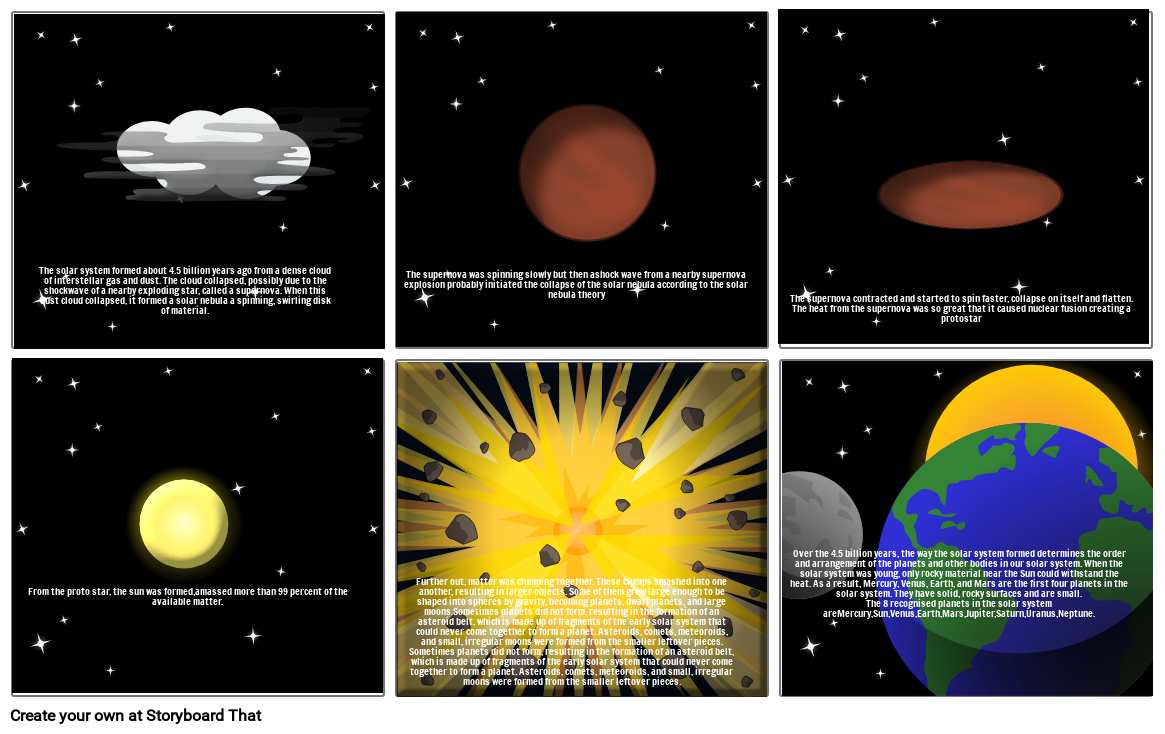Unknown Story

Siužetinės Linijos Tekstas
- The solar system formed about 4.5 billion years ago from a dense cloud of interstellar gas and dust. The cloud collapsed, possibly due to the shockwave of a nearby exploding star, called a supernova. When this dust cloud collapsed, it formed a solar nebula a spinning, swirling disk of material.
- The supernova was spinning slowly but then ashock wave from a nearby supernova explosion probably initiated the collapse of the solar nebula according to the solar nebula theory
- The supernova contracted and started to spin faster, collapse on itself and flatten. The heat from the supernova was so great that it caused nuclear fusion creating a protostar
- From the proto star, the sun was formed,amassed more than 99 percent of the available matter.
- Further out, matter was clumping together. These clumps smashed into one another, resulting in larger objects. Some of them grew large enough to be shaped into spheres by gravity, becoming planets, dwarf planets, and large moons.Sometimes planets did not form, resulting in the formation of an asteroid belt, which is made up of fragments of the early solar system that could never come together to form a planet. Asteroids, comets, meteoroids, and small, irregular moons were formed from the smaller leftover pieces.Sometimes planets did not form, resulting in the formation of an asteroid belt, which is made up of fragments of the early solar system that could never come together to form a planet. Asteroids, comets, meteoroids, and small, irregular moons were formed from the smaller leftover pieces.
- Over the 4.5 billion years, the way the solar system formed determines the order and arrangement of the planets and other bodies in our solar system. When the solar system was young, only rocky material near the Sun could withstand the heat. As a result, Mercury, Venus, Earth, and Mars are the first four planets in the solar system. They have solid, rocky surfaces and are small.The 8 recognised planets in the solar system areMercury,Sun,Venus,Earth,Mars,Jupiter,Saturn,Uranus,Neptune.
Sukurta daugiau nei 30 milijonų siužetinių lentelių

